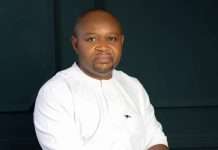
A Consultant Orthopaedic Surgeon, Prof. Oladipo Adewole, says clubfoot deformity is treatable, warning parents against abandoning such children at villages or prayer mountains.
Adewole, Head, Orthopaedic and Trauma Department, Lagos State University Teaching Hospital (LASUTH), said this in an interview with the News Agency of Nigeria (NAN) on Friday in Lagos.
Clubfoot is a congenital foot deformity that affects a child’s bones, muscles, tendons, and blood vessels.
The condition makes a baby’s foot or feet turn inward and won’t go away on its own, but with early treatment, children experience better health outcomes.
According to the Cleveland Clinic, one in every 1,000 babies will be born with clubfoot, making it one of the most common congenital foot deformities.
Over 80 per cent of global annual prevalence occurs in low-income countries where access to effective treatment was limited, with Nigeria accounting for 9,800 new cases of clubfoot yearly.
Adewole noted that previously many people thought clubfoot was untreatable, resulting in pain, difficulty walking, lifetime disability, stigmatisation, and limited access to education and economic opportunities.
According to him, medical advancement has made most cases of clubfoot treatment a non-surgical techniques which may include a combination of manipulation, stretching, casting and bracing.
“Infact, many famous people have clubfoot. Cristiano Ronaldo had clubfoot and it was corrected; it’s the same feet that he’s using to play football and earn so much money.
“We have a specialised clubfoot clinic in LASUTH, and we have sponsors that support it. In my clubfoot clinic, no patient pays a penny.
“This initiative is to encourage patients with clubfoot access proper treatment without concerns for funds, as early treatment helps a child avoid problems later,” he said.
He noted that the exact cause of clubfoot was unknown, however, research had linked the condition to genetic and environmental factors which include family history of clubfoot, smoking and certain medications during pregnancy.
Adewole, who is also the Chairman, West Africa Orthopaedic Surgeons, appealed to the government to increase awareness on the treatable condition toward reducing the burden of clubfoot deformity in the country.
The professor disclosed that trauma (injuries), especially from road accidents were the most common orthopaedic cases in hospitals.
Adewole noted that it was closely followed by domestic accidents and age-related diseases such as arthritis, leading to joint and spine related surgeries.
According to him, regular check ups will assist in early detection of musculoskeletal conditions.
He advised the aging population to embrace an active lifestyle, healthy diets and weight control, noting that overweight people usually have arthritis of the knee and back pain.
Adewole noted that the Limb Deformity Corrective Surgery Programme (LDCSP) started in Lagos in 2004 as a medical assistance programme for children with lower limb deformities that affect normal growth and function in children.
“Many children with limb deformity were seen by the roadsides begging for alms. We took a public health approach to solve the challenges because we found out from a survey that many of the cases were correctable,” he said.
Adewole noted that over 2,000 limb deformities had been corrected in Lagos.
According to him, hip and joint replacement are done routinely in Lagos for about N1.5 million, saying it was the cheapest in the country.
He noted that currently NHIA was concentrating on preventive diseases, appealing to the government to increase funding and expand the coverage of health insurance to include knee replacement.
Adewole warned citizens against patronising traditional bone healers, saying they complicate patients’ health issues.
(NAN)










